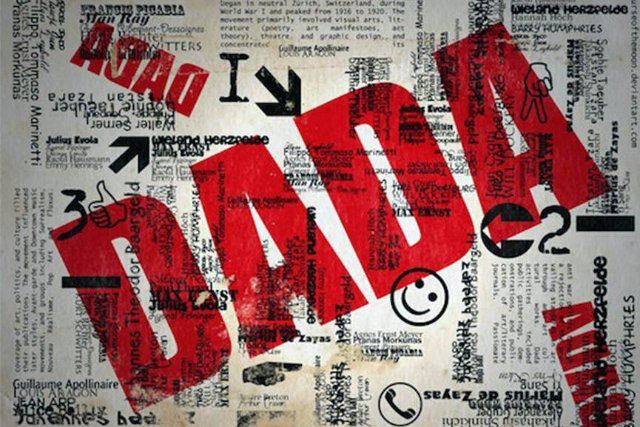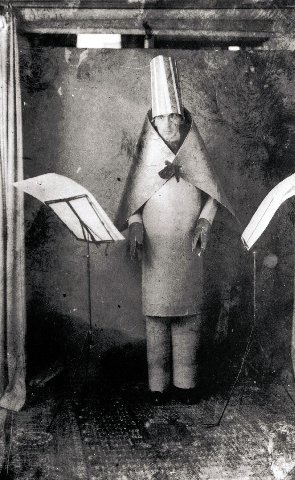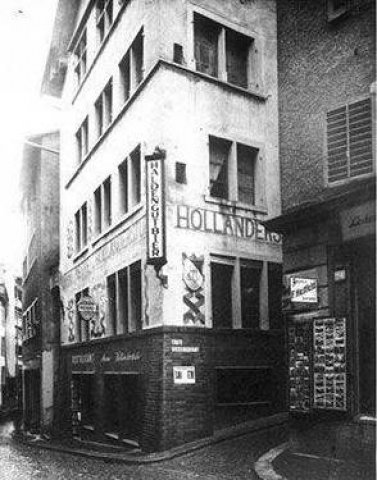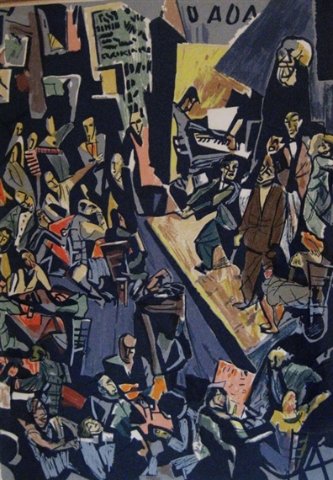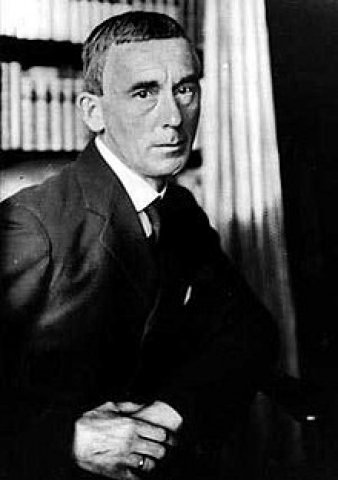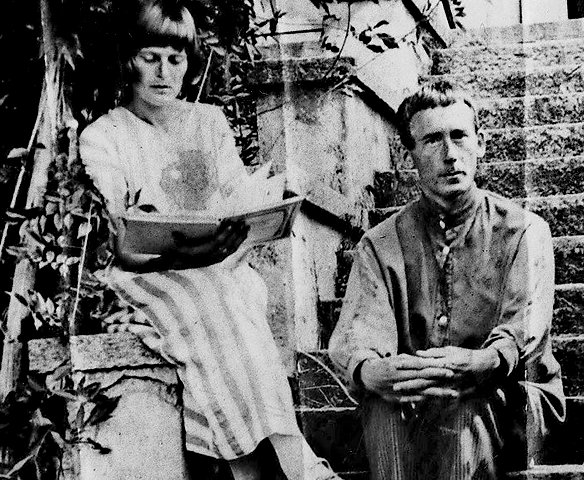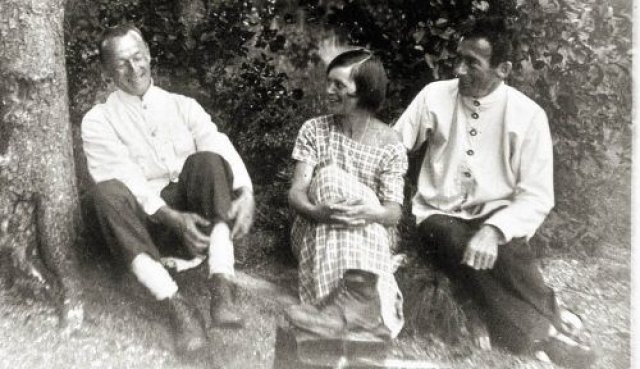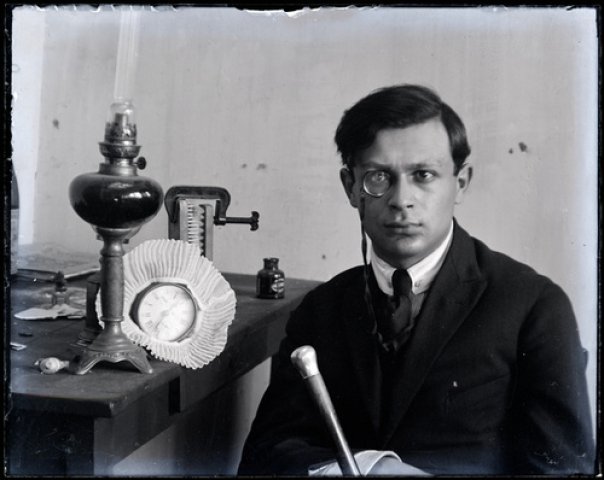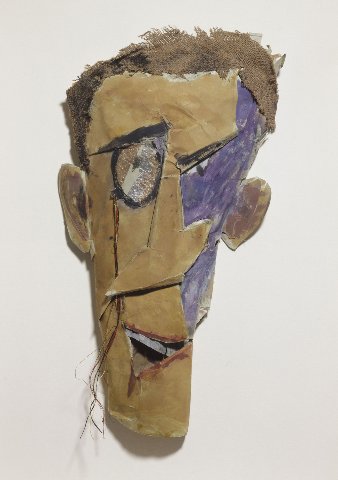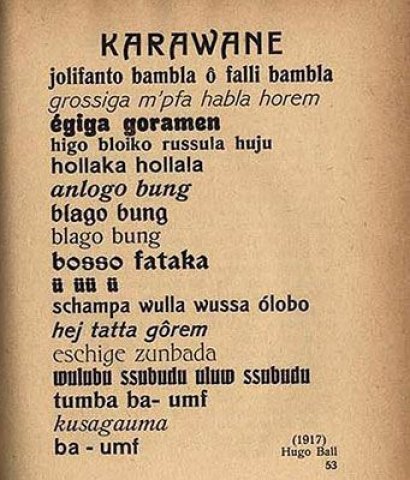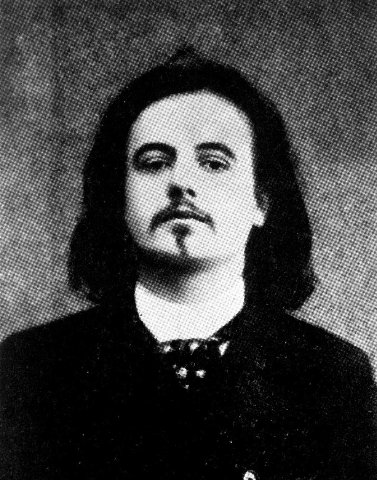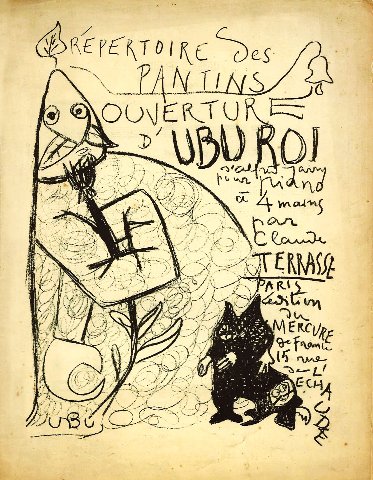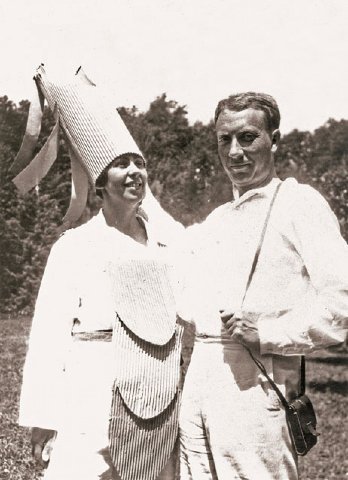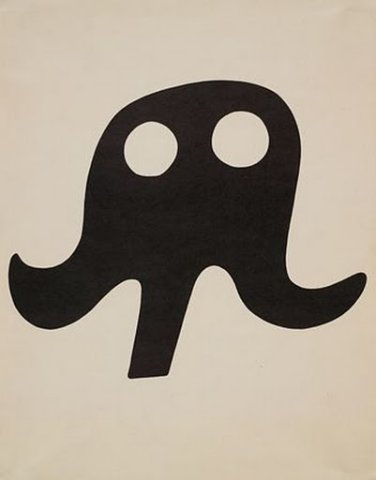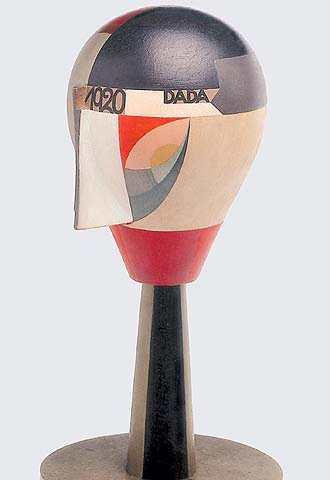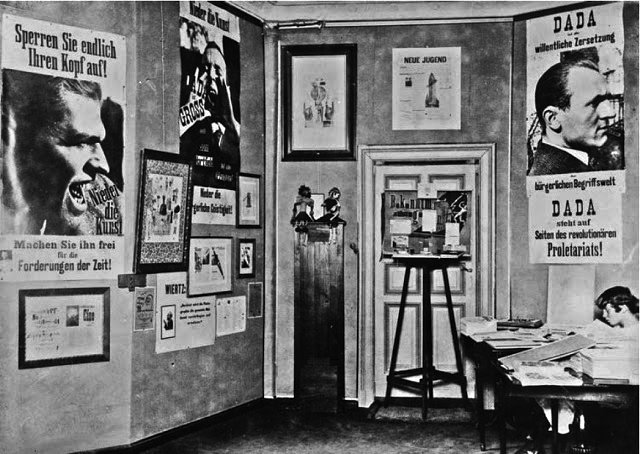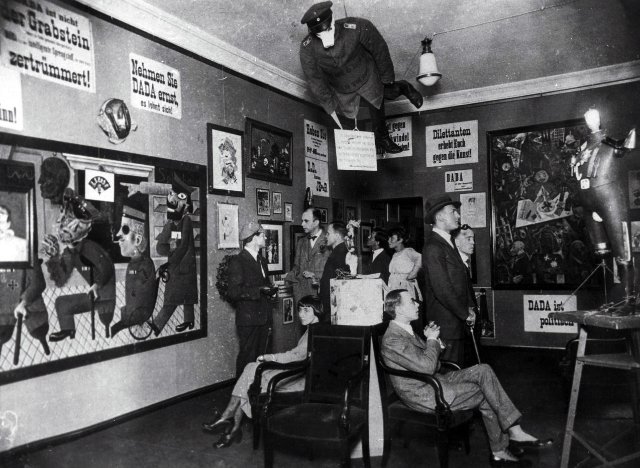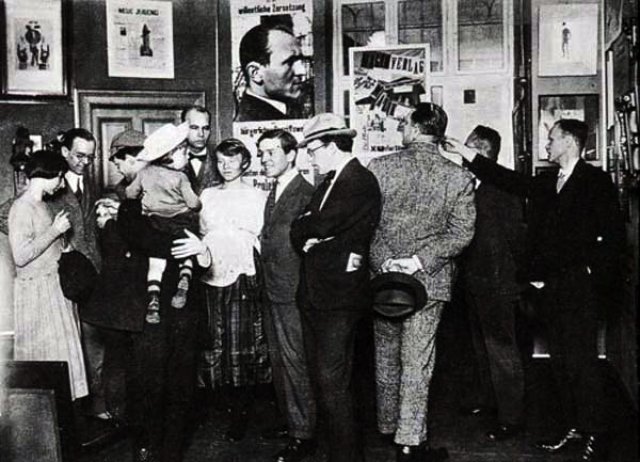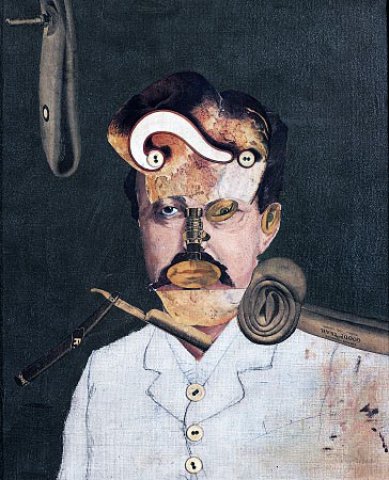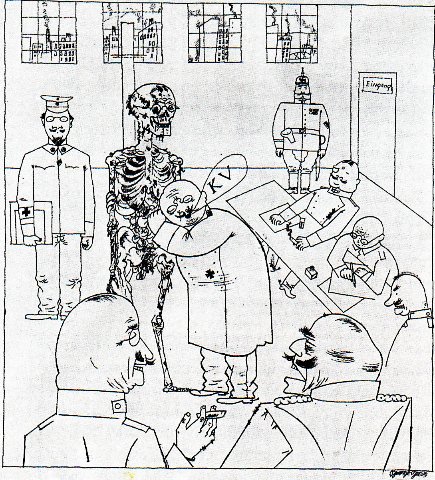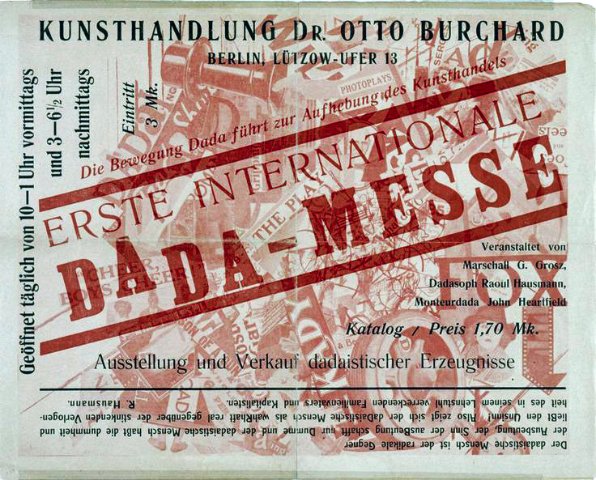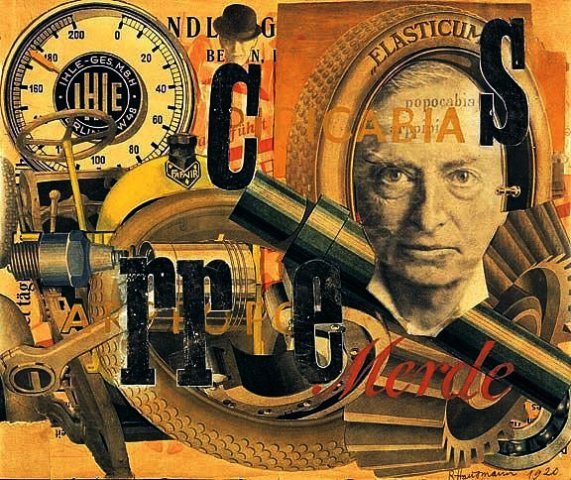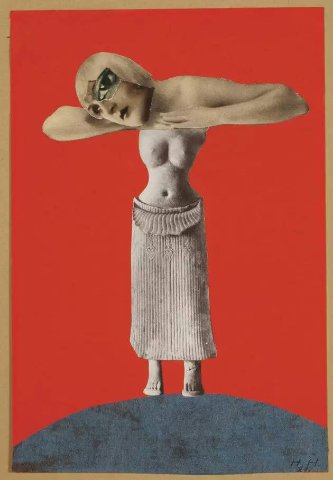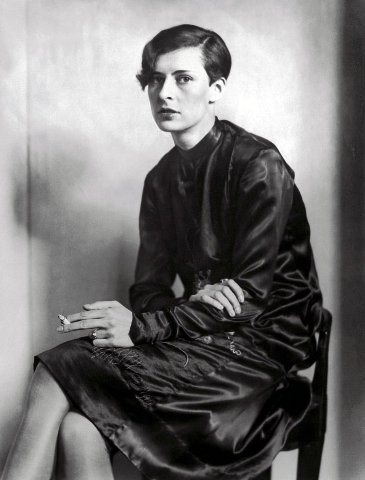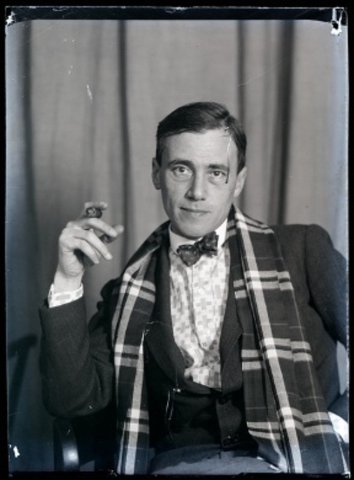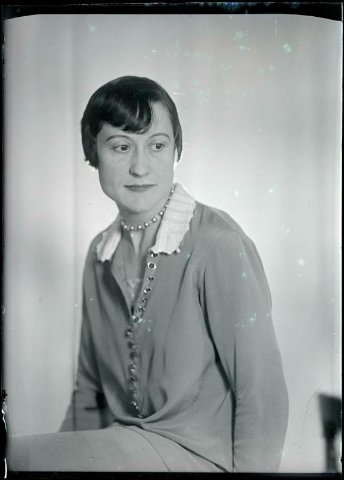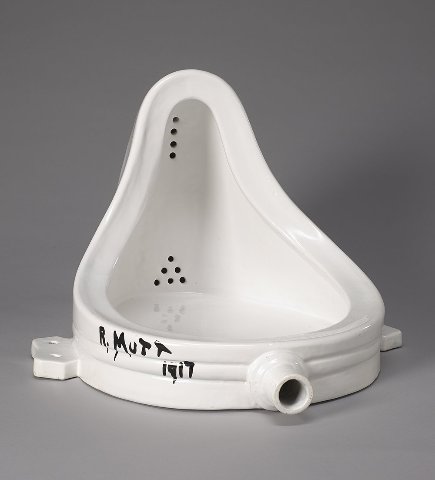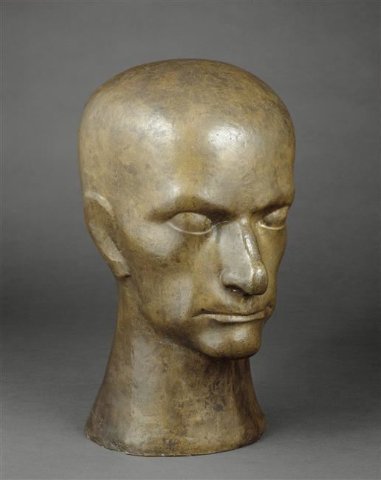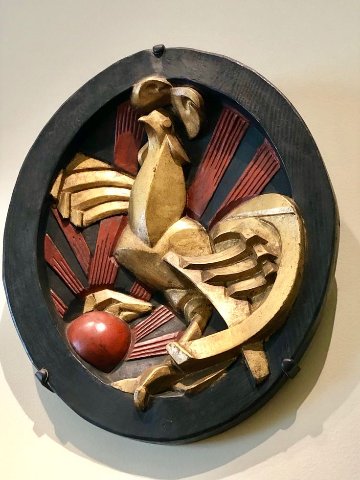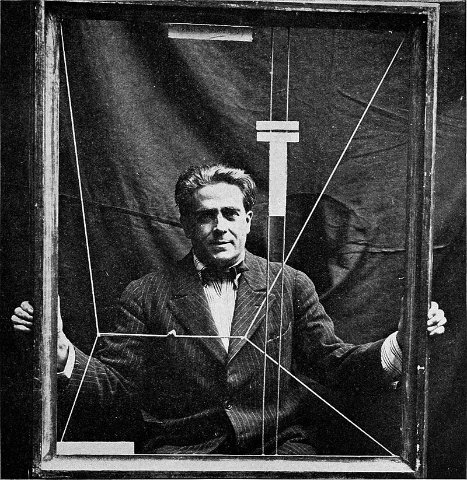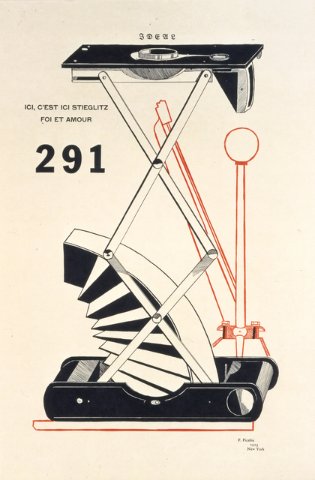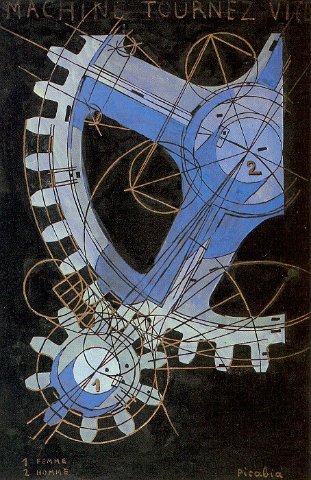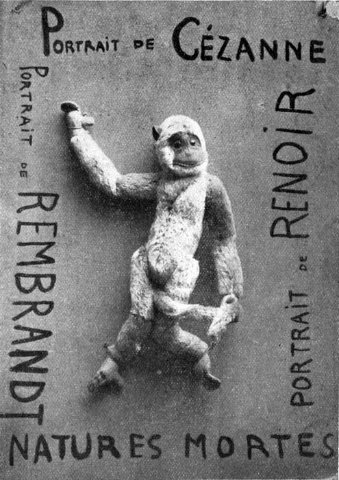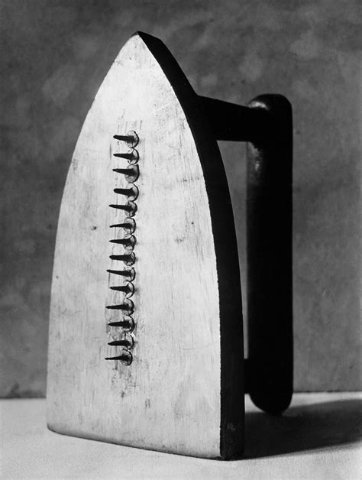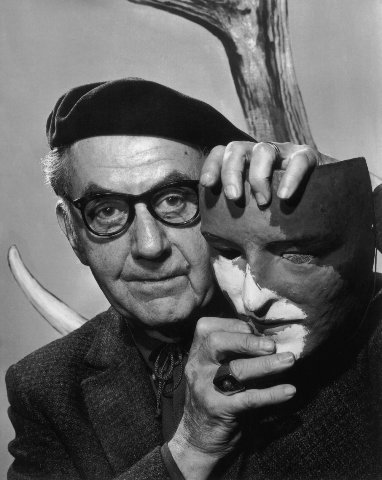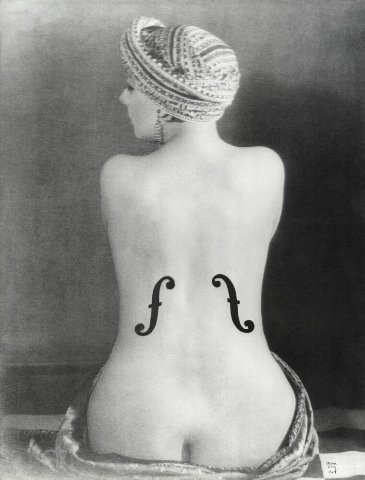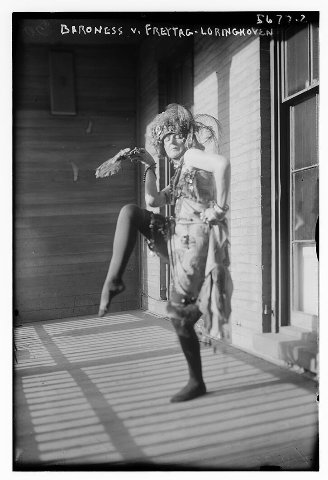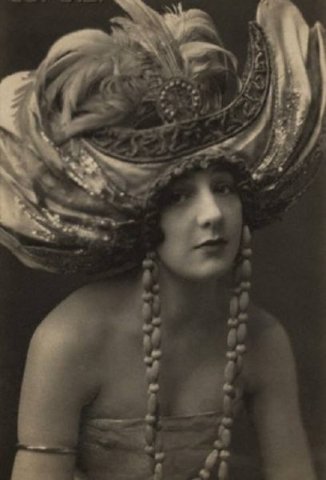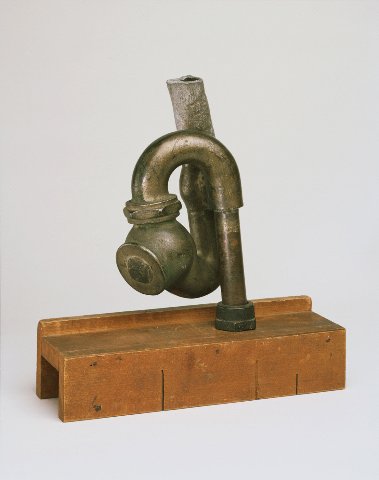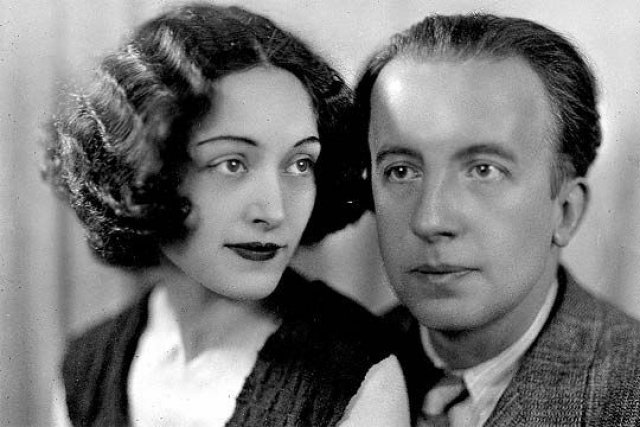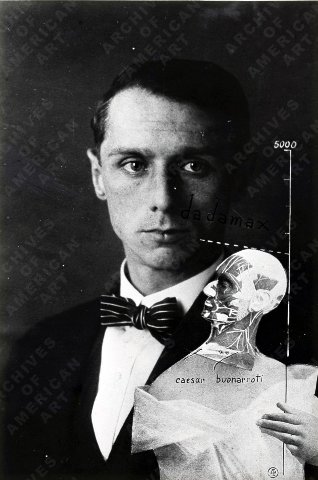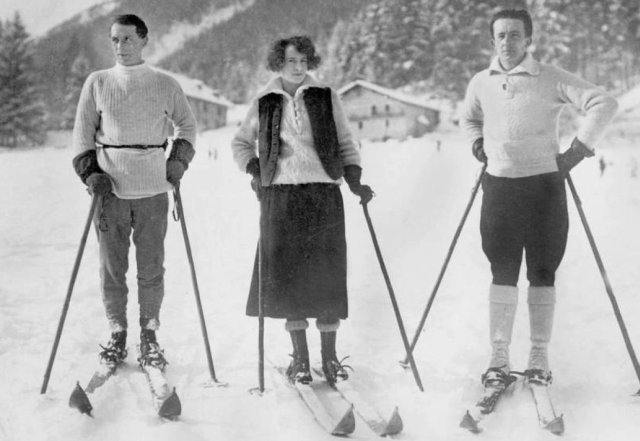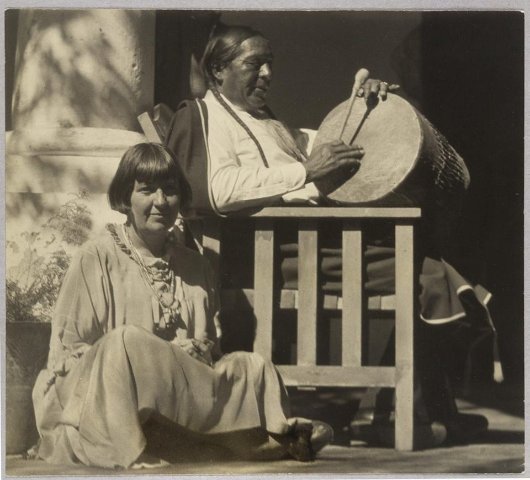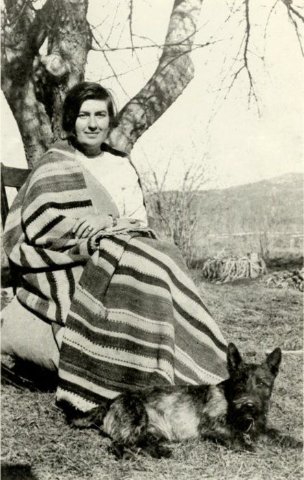Dada Was a Mother
Anarchy and Anti-Art Movement Led to Surrealism
By: Charles Giuliano - Jun 23, 2024
Like everything in life, Dada is useless. Dada is without pretension, as life should be.
Within days of each other, in 1924, two surrealist manifestos, by Andre Breton and Yvan Goll were published. Breton later wrote a second in 1929, publishing it the following year, with his third manifesto in 1942. In a struggle for dominance Goll was sidelined. Breton would be known for dictatorship over surrealism.
A hundred years of surrealism is being noted with global exhibitions and media attention. What is acknowledged in passing is that there would be no Surrealism without the avant-garde Dada movement which emerged during WW1 in neutral Switzerland in 1916.
Responding to the senseless carnage the continuity of modernism was sabotaged or derailed. While creativity continued there was a rupture from movements inspired by impressionism and post impressionism. There was a rejection of cubism, expressionism, futurism and all other isms. The nonsense term Dada was a way of identifying the anarchy of what it was not. What was the point of creating art in the conventional sense. Although ironically Dada was eventually absorbed into the canon of art history and style. This notion defies the essence of Dada as was often proclaimed in its manifestos, chaotic performances and randomly created literature. In such a paradigm an object was displayed on a pedestal elevated to the status of art.
A generation later, in the aftermath of Nazi Germany, Theodor Adorno observed in 1949 that writing poetry after Auschwitz was barbaric — “nach Auschwitz ein Gedicht zu schreiben, ist barbarisch.”
Having served in the war the German artists George Grosz, and Otto Dix created ghastly images. Like Goya, Dix created a series of prints “Disasters of War.” Another former soldier, John Heartfield, used the photomontage techniques of Dada to create anti-Facist satire. Grosz and Heartfield were a part of the political/ Marxist edge of Berlin Dada. While in Zurich, where Dada was born, the spirit of anti art and aesthetic cacophony was more enigmatic.
The German poet, Hugo Ball (1886-1927) and his companion, later wife, Emmy Hemmings (1885-1948) were scratching out a living in Switzerland as cabaret performers. They opted to open their own venue, with some 60 seats, as Cabaret Voltaire. In ran from February 1916 through that summer. Often packed and notable for aesthetic anarchy it earned its place in history.
As war raged Zurich was a sanctuary for an influx of refugees. Vladimir Lenin, then in exile, lived diagonally across the street. While plotting a different form of revolution it is intriguing to speculate if he popped in. Other founding members of Zurich Dada were Marcel Janco, Richard Huelsenbeck, Tristan Tzara, Sophie Taeuber-Arp and Jean Arp. When Cabaret Voltaire closed the artist moved on to other places in Zürich such as the Galerie Dada at Bahnhofstrasse 19.
During its brief run the venue was a vortex for the expat creative community. That included Filippo Tommaso Emilio Marinetti an Italian poet, editor, art theorist, and founder of the Futurist movement. Though primarily focused on experimental poetry, accompanied by invented instruments and percussion (jangling keys or African drum), dance and inventive prop/ costumes by Janco and Taeuber-Arp, there also were exhibitions. Works by Wassily Kandinsky, Paul Klee, Giorgio de Chirico, Sophie Taeuber-Arp, and Max Ernst were shown. Other that Taeuber-Arp, these artists are not connected to Dada.
Particularly at its inception, other than props and costumes, Dada was not notable for a distinctive visual arts style. That would change with Berlin and Cologne Dada, as well as the subversive works of the New York Dada artists, Marcel Duchamp, Francis Picabia and Man Ray.
An exception is made for Jean/ Hans Arp who created works according to elements of chance. That was the later mandate of John Cage and his partner Merce Cunningham. A case for a Dada style is the ransom-note graphics of its publications and the ‘found” poetry of Tristan Tzara and others. He cut up phrases from newspapers then randomly chose and assembled them as poems. He also introduced raucous readings of different works simultaneously.
Janco painted a memorable view of a typical night at the cabaret. In 1941 he and his family fled to Israel. Hans Arp wrote a vivid description of the chaos “The people around us are shouting, laughing, and gesticulating. Our replies are sighs of love, volleys of hiccups, poems, moos … Tzara is wiggling his behind like the belly of an Oriental dancer. Janco is playing an invisible violin and bowing and scraping. Madam Hennings, with a Madonna face, is doing the splits. Huelsenbeck is banging away nonstop on the great drum, with Ball accompanying him on the piano pale as a chalky ghost. We were given the honorary title of Nihilists.”
Attired as an avant-garde bishop with cardboard robes and mitre, on stage Ball recited his Dada Manifesto.
Dada is a new tendency in art. One can tell this from the fact that until now nobody knew anything about it, and tomorrow everyone in Zurich will be talking about it. Dada comes from the dictionary. It is terribly simple. In French it means “hobby horse”. In German it means “good-bye”, “Get off my back”, “Be seeing you sometime”. In Romanian: “Yes, indeed, you are right, that’s it. But of course, yes, definitely, right”. And so forth.
An International word. Just a word, and the word a movement. Very easy to understand. Quite terribly simple. To make of it an artistic tendency must mean that one is anticipating complications. Dada psychology, dada Germany cum indigestion and fog paroxysm, dada literature, dada bourgeoisie, and yourselves, honoured poets, who are always writing with words but never writing the word itself, who are always writing around the actual point. Dada world war without end, dada revolution without beginning, dada, you friends and also-poets, esteemed sirs, manufacturers, and evangelists. Dada Tzara, dada Huelsenbeck, dada m’dada, dada m’dada dada mhm, dada dera dada, dada Hue, dada Tza.
How does one achieve eternal bliss? By saying dada. How does one become famous? By saying dada. With a noble gesture and delicate propriety. Till one goes crazy. Till one loses consciousness. How can one get rid of everything that smacks of journalism, worms, everything nice and right, blinkered, moralistic, europeanised, enervated? By saying dada. Dada is the world soul, dada is the pawnshop. Dada is the world’s best lily-milk soap. Dada Mr Rubiner, dada Mr Korrodi. Dada Mr Anastasius Lilienstein. In plain language: the hospitality of the Swiss is something to be profoundly appreciated. And in questions of aesthetics the key is quality.
I shall be reading poems that are meant to dispense with conventional language, no less, and to have done with it. Dada Johann Fuchsgang Goethe. Dada Stendhal. Dada Dalai Lama, Buddha, Bible, and Nietzsche. Dada m’dada. Dada mhm dada da. It’s a question of connections, and of loosening them up a bit to start with. I don’t want words that other people have invented. All the words are other people’s inventions. I want my own stuff, my own rhythm, and vowels and consonants too, matching the rhythm and all my own. If this pulsation is seven yards long, I want words for it that are seven yards long. Mr Schulz’s words are only two and a half centimetres long.
It will serve to show how articulated language comes into being. I let the vowels fool around. I let the vowels quite simply occur, as a cat meows … Words emerge, shoulders of words, legs, arms, hands of words. Au, oi, uh. One shouldn’t let too many words out. A line of poetry is a chance to get rid of all the filth that clings to this accursed language, as if put there by stockbrokers’ hands, hands worn smooth by coins. I want the word where it ends and begins. Dada is the heart of words.
Each thing has its word, but the word has become a thing by itself. Why shouldn’t I find it? Why can’t a tree be called Pluplusch, and Pluplubasch when it has been raining? The word, the word, the word outside your domain, your stuffiness, this laughable impotence, your stupendous smugness, outside all the parrotry of your self-evident limitedness. The word, gentlemen, is a public concern of the first importance.
He is most noted for inventing sound poetry. In 1916, Ball wrote his poem “Karawane,” consisting of nonsensical words. The meaning, however, resides in its meaninglessness, reflecting the chief principle behind Dadaism. Departing Zurich Hugo and Emmy pursued a rural, modest life. He wrote a biography of their friend Herman Hesse.
Ball’s poem “Gadji beri bimba” was adapted to the song “I Zimbra” on the 1979 Talking Heads album Fear of Music. Ball received a writing credit for the song on the track listing.
The song contains these lines:
Gadji beri bimba clandridi
Lauli lonni cadori gadjam
A bim beri glassala glandride
E glassala tuffm I zimbra
The complete “Gadji beri bimba” poem by Ball reads:
gadji beri bimba glandridi laula lonni cadori
gadjama gramma berida bimbala glandri galassassa laulitalomini
gadji beri bin blassa glassala laula lonni cadorsu sassala bim
gadjama tuffm i zimzalla binban gligla wowolimai bin beri ban
o katalominai rhinozerossola hopsamen laulitalomini hoooo
gadjama rhinozerossola hopsamen
bluku terullala blaulala loooo
zimzim urullala zimzim urullala zimzim zanzibar zimzalla zam
elifantolim brussala bulomen brussala bulomen tromtata
velo da bang band affalo purzamai affalo purzamai lengado tor
gadjama bimbalo glandridi glassala zingtata pimpalo ögrögöööö
viola laxato viola zimbrabim viola uli paluji malooo
tuffm im zimbrabim negramai bumbalo negramai bumbalo tuffm i zim
gadjama bimbala oo beri gadjama gaga di gadjama affalo pinx
gaga di bumbalo bumbalo gadjamen
gaga di bling blong
gaga blung
After Ball the new spokesperson for Dada, Tristan Tzara, (1896-1963) brought an aggressive, radical approach to Dada and its struggle for dominance. This would later lead to battles with Breton (including fisticuffs) and the emergence of surrealism by 1924. Dada would play out its last gasp in Paris during 1920-22. Breton rounded up the last of the Dadaists as thugs to sabotage the events of his rival.
The tone of Ball was benign compared to that of Tzara. Consider this excerpt from the first of his several manifestos. “Nothing is more delightful than to confuse and upset people. People one doesn’t like. What’s the use of giving them explanations that are merely food for curiosity? The truth is that people love nothing but themselves and their little possessions, their income, their dog. This state of affairs derives from a false conception of property. If one is poor in spirit, one possesses a sure and indomitable intelligence, a savage logic, a point of view that can not be shaken. Try to be empty and fill your brain cells with a petty happiness. Always destroy what you have in you. On random walks. Then you will be able to understand many things. You are not more intelligent than we, and we are not more intelligent than you.
“Intelligence is an organization like any other, the organization of society, the organization of a bank, the organization of chit-chat. At a society tea. It serves to create order and clarity where there is none. It serves to create a state hierarchy. To set up classifications for rational work. To separate questions of a material order from those of a cerebral order, but to take the former very seriously. Intelligence is the triumph of sound education and pragmatism. Fortunately life is something else and its pleasures are innumerable. They are not paid for in the coin of liquid intelligence…
“What good did the theories of the philosophers do us? Did they help us to take a single step forward or backward? What is forward, what is backward? Did they alter our forms of contentment? We are. We argue, we dispute, we get excited. The rest is sauce. Sometimes pleasant, sometimes mixed with a limitless boredom, a swamp dotted with tufts of dying shrubs.”
Berlin
With the demise of Zurich Dada, in 1917, Richard Huelsenbeck, returned to Berlin. Where Zurich had provided refuge Berlin was the heart and soul of the struggles of “blood and soil.” The fine arts, as tool of agit-prop had a more infused iteration. The artists embraced photo collage as a technique for political satire. Dada started to make an impact on art history with strident and roiling exhibitions.
“Berlin was a city of tightened stomachers, of mounting, thundering hunger, where hidden rage was transformed into a boundless money lust, and men’s minds were concentrating more and more on questions of naked existence… Fear was in everybody’s bones” – Richard Hülsenbeck
Raoul Hausmann, who helped establish Dada in Berlin, published his manifesto Synthethic Cino of Painting in 1918 where he attacked Expressionism and the art critics who promoted it. Dada is envisioned in contrast to art forms, such as Expressionism, that appeal to viewers’ emotional states: “..the exploitation of so-called echoes of the soul…A child’s discarded doll or a brightly colored rag are more necessary expressions than those of some ass who seeks to immortalize himself in oils in finite parlors.”
Hans Richter, a Dadaist in Berlin more as observer than participant, identified its characteristics “…its political element and its technical discoveries in painting and literature”; “inexhaustible energy”; “mental freedom which included the abolition of everything”; and “members intoxicated with their own power in a way that had no relation to the real world”, who would “turn their rebelliousness even against each other.”
There was a vibrant and inventive core of artists. Hannah Höch the companion of Hausmann, was expected to provide tea and sandwiches for meetings of artists. Today her photo montages are prized for their wit and originality. George Grosz, with his friend John Herzfeld/ Heartfield applied their skills to subversive, satirical graphics and photocollage. Both served in WWI as did Joseph Beuys and Otto Piene in WWII. They risked their lives to protest Hitler and the rise of National Socialism. They fled Nazi Germany and Grosz landed on Cape Cod.
Johannes Baader (1875 – 1955) was a Dada artist and activist. For demonstrations he created giant collages which he then destroyed. In 1917 he was certified legally insane as a result of manic depression. He gave outrageous public performances parodying public and mythic identities and producing utopian designs of monumental, metaphysical, and messianic dimensions. In the same year he ran for office in the Reichstag in Saarbrücken. He would later become a leader in the German political party known as The Central Council of Dada for the World Revolution. Hausmann appointed him head of a society called Christus GmbH (Christ Ltd), which he formally founded as a legal company in 1917.
After the war, the Berlin artists published a series of short-lived political magazines and held the First International Dada Fair, ‘the greatest project yet conceived by the Berlin Dadaists’, in the summer of 1920. As well as work by Grosz, Hausmann, Höch, Johannes Baader, Huelsenbeck and Heartfield – the exhibition also included the work of Otto Dix, Francis Picabia, Jean Arp, Max Ernst, Rudolf Schlichter, Johannes Baargeld and others. In all, over 200 works were exhibited, surrounded by incendiary slogans, some of which also ended up written on the walls of the Nazi’s Entartete Kunst exhibition in 1937. The Berlin group published periodicals such as Club Dada, Der Dada, Everyman His Own Football and Dada Almanac
Cologne
In Cologne, Maz Ernst, Johannes Theodor Baargeld, and Hans/Jean Arp launched a controversial Dada exhibition in 1920 which focused on nonsense and anti-bourgeois sentiments. Cologne’s Early Spring Exhibition was set up in a pub, and required that participants walk past urinals while being read lewd poetry by a woman in a communion dress. The police closed the exhibition on grounds of obscenity, but it was re-opened when the charges were dropped.
Hanover
As creator of Merz, Kurt Schwitters is known for numerous collages with found material. He created his home as a site specific construction. Though not a direct participant in Berlin Dada’s activities, its ideas informed his work. He would later give Dada recitals throughout Europe on the subject with Theo van Doesburg, Tristan Tzara, Jean Arp and Raoul Hausmann. He was more in tune with Zürich Dada’s championing of performance and abstract art than Berlin’s agit-prop.
Paris
Dada in Paris surged in 1920 when many of the originators converged there. Inspired by Tzara, Paris Dada soon issued manifestos, organized demonstrations, staged performances and produced a number of journals (the final two editions of Dada, Le Cannibale, and Littérature featured Dada in several editions.)
The first introduction of Dada artwork to the Parisian public was at the Salon des Indépendants in 1921. Jean Crotti\ exhibited works associated with Dada including a work entitled, Explicatif bearing the word Tabu. In the same year Tzara staged his Dadaist play The Gas Heat to howls of derision from the audience. When it was re-staged in 1923 the play provoked a theatre riot (initiated by Breton) that heralded the split within the movement that was to produce Surrealism. Tzara’s last attempt at a Dadaist drama was Handkerchief of Clouds in 1924.
New York
Marcel Duchamp and Francis Picabia met in September 1911 at the Salon d’Automne. Their friendship and collaboration continued in New York when Duchamp arrived there in 1915. He was already a celebrity with “Nude Descending a Staircase,” one of four works he showed, a sensation of the 1913 Armory Show. The sale of those works financed his travel.
He abandoned painting as “too retinal” while inventing the Found Object and working on “The Large Glass.” He abandoned art to compete in chess an activity with modest success.
Research now reveals that credit for inventing the readymade or found object goes to the truly outrageous Elsa Baroness von Freytag-Loringhoven (1874-1927). She created the Dada icon “God” and used detritus to fashion costumes. Tin cans were used as a bra and a bird cage became a hat. Duchamp and Man Ray created a short film of the Baroness shaving her pubic hair. The title came from her third marriage. Broke in New York friends funded her return to Europe. There she perished from a gas leak in a squalid apartment,
There were other inventive women in the Duchamp, Man Ray, Picabia orbit including the wealthy women Mabel Dodge and Katherine Dreier who operated lively salons. Pot and peyote configured into the Dodge gatherings. It was to New York what hash brownies were for the salons of Gertrude Stein and Alice B. Toklas.
While Duchamp was tagged with Dada he never joined any art movement. He and his work are best known for what they are not. That annoys those who believe that he destroyed art. He created the notion that it’s art if I say it is. Under his influence that has resulted in generations of bad art.
Known for found objects and readymades in fact he created very few. The originals, of no material value, were lost or abandoned, Late in his career, when the art world discovered he was not dead, the lost early work was editioned to create modest income.
For one who never sought fame or fortune, arguably, he was the most influential artist of his generation which continues today as assemblage and conceptual art.
His three siblings; Jacques Villon, Suzanne Duchamp and Raymond Duchamp-Villon were also artists. Raymond, a sculptor, was the most promising but he was a non combat casualty of WWI.
In New York, Picabia, Man Ray and Duchamp had no knowledge of European Dada. That changed when Picabia and Duchamp returned to Europe and the American Man Ray immigrated to Paris. There he evolved from painting to photography with great success.
Consider that Picabia may be the most intriguing of the Dada artists. He was wealthy and had the means to seek out the action. Based on 291 by Alfred Stieglitz (Publisher of Camera Work, gallerist of 291, and photographer) he published 391. He created clever mechanical images like his folding camera portrait of Stieglitz.
This is the dust that has settled from a deep dive into Dada. It’s a dense and complex study with many adherents and not a lot of documents. There are few Dada works to view in museums. It persists as an idea. There was never much impetus for making and selling work. That seems unfathomable today. Not to worry, that all changed with surrealism which is the sizzle of a Dada steak.
We would like to know more of Beatrice Wood a potter who lived to be 103. She founded and edited The Blind Man and Rongwrong magazines in New York City with Duchamp and writer Henri-Pierre Roché in 1917. Though she was most involved with Roché, the two often spent time with Duchamp, creating a kind of love triangle. This was not, however, the inspiration for Roché’s 1953 novel, Jules et Jim (or the 1962 film adaptation by François Truffaut). She observed “I cannot say what memories or episodes inspired Roché, but the characters bear only passing resemblance to those of us in real life!”
I crave to know more about the total gonzo Arthur Craven (1887 – disappeared 1918). He is remembered for outrageous Dada stunts. An amateur boxer he challenged Jack Johnson (The Great White Hope). The champ played along and toyed with him before a knockout in round one. It was an easy payday.
Now that’s total Dada.

